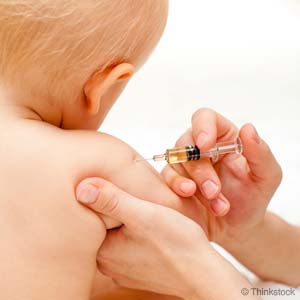That’s the result of the latest study from the CDC which you can read here. At least 2 million people annually are infected by resistant bacteria. Popular Science has more on the results of the study and on resistant bacteria in general.
Category: Health (page 8 of 27)

Vaccination
A new epidemic of measles has broken out in Wales. Vaccination rates fell after a paper linking the vaccine to autism was published in the 1998. The paper was later proven to be fraudulent. NPR reports:
More than 1,200 people have come down with measles so far this year, following nearly 2,000 cases in 2012. Many of the cases have been in Wales.
Childhood vaccination rates plummeted in Great Britain after a 1998 paper by Dr. Andrew Wakefield claimed that the vaccine for measles, mumps and rubella had caused autism in a dozen children. That study has since been proven , but it fueled fears about vaccine safety in Great Britain and the United States.
“This is the legacy of the Wakefield scare,” Dr. David Elliman, spokesman for the Royal College of Pediatrics and Child Health, told The Associated Press.
Most of the measles cases have been in children and teenagers between the ages of 10 and 18, according to British health officials. In that age group, vaccination rates dropped below 50 percent in some parts of England after the Wakefield paper was published.

Image from NPR. Abdullah Mchumvu trains African giant pouched rats in Morogoro, Tanzania
Tuberculosis still kills 1.4 million people a year, mostly in the developing world. So it is still beneficial to create new diagnostic techniques, especially when they can be used in rural communities. NPR recently reported on a team of scientists who train African giant pouch rats to sniff out the bacterium in patients’ sputum:
The team trains the critters with a Pavlovian click-and-reward approach. When the rats are just a few weeks old, technicians teach the animals to associate a click sound with a small bite of mashed bananas and a special pellet of food. The next step is to link the scent of TB with the reward.
A trained rat can correctly pick out a TB sample about two-thirds of the time, Beyene says. The rate increases to about 80 percent when two or three animals are put on the task.
The rats aren’t as good as a trained pathologist in the U.S. with a microscope, but they get better results than many clinicians working in rural Africa can achieve, Beyene says. “In an African setting, the sensitivity of the microscopy ranges between 30 to 40 percent,” he explains.
So far APOPO only has around 32 rats in their TB program.
Currently the rats are being used to verify positive test results obtained from microscopic samples.
